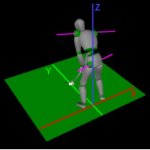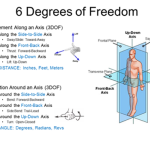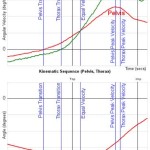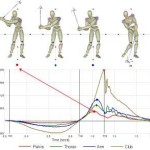Recently, in the Facebook golf groups there has been a lot of interest in basic biomechanics principles, so I thought I would post this document. I originally wrote it last year for the LPGA to be incorporated as part of their Integrated Performance System. It presents selected topics on basic biomechanics principles for the golf swing. The topic covered … [Read more...]
Analyzing the Golf Swing in 6 Degrees of Freedom with AMM 6DOF Systems
What is 6DOF? Six-degrees-of-freedom (6DOF) means you can move six ways; forward/backward, left/right, up/down; these movements are linear, determine your position and are measured in feet, inches, meters etc. You can also turn, plus bend forward/backward or side to side; these movements are angular, determine your orientation and are measured in degrees. When you measure … [Read more...]
Pelvis and Thorax Transition plus Spine Rotation
Here is a detailed explanation of the pelvis and thorax kinematic sequence curves from TPI 3D, focused around transition. They display how transition occurs and there is a lot of information that can be gleaned from them. They relate directly to the spine rotation graph also. So for TPI 3D techies here we go. The two above graphs have time in seconds along the X-axis … [Read more...]
When does the Pelvis Begin to Decelerate in the Downswing of Golf?
In order to create maximum speed of a distal segment or implement, the principle of the kinematic sequence (a.k.a kinetic link) shows that each body part, should accelerate then decelerate in a sequential manner. For the golf swing, to achieve maximum club speed, the sequence is pelvis, thorax (ribcage), lead arm, club shaft. This means that during the downswing the pelvis … [Read more...]



